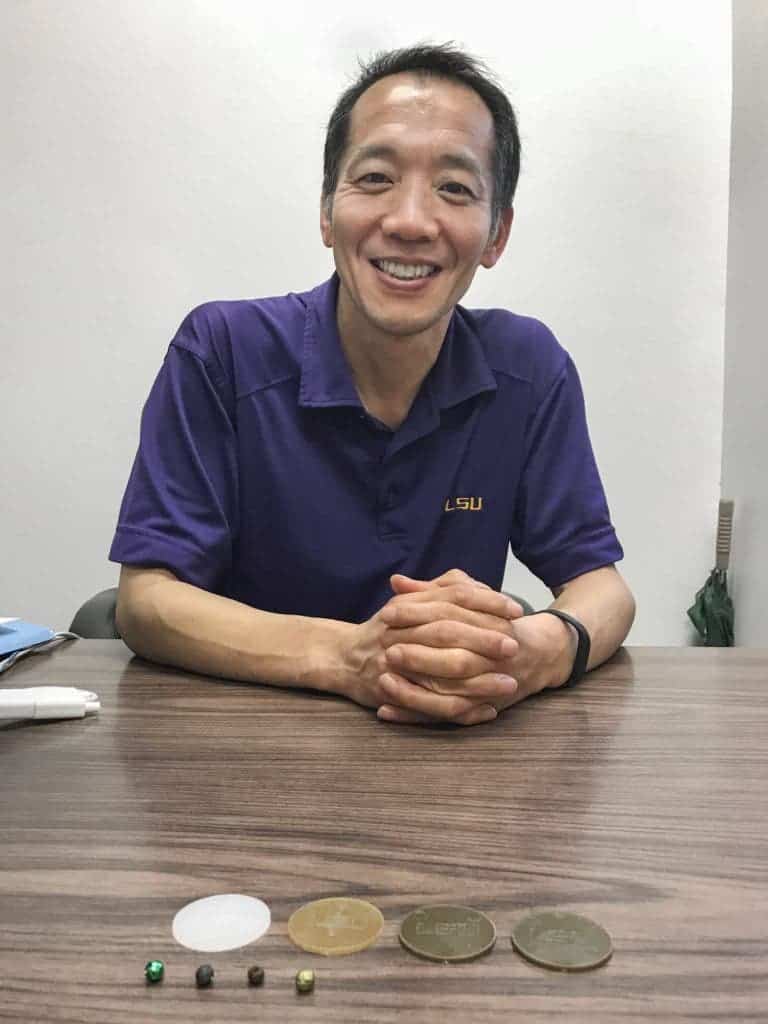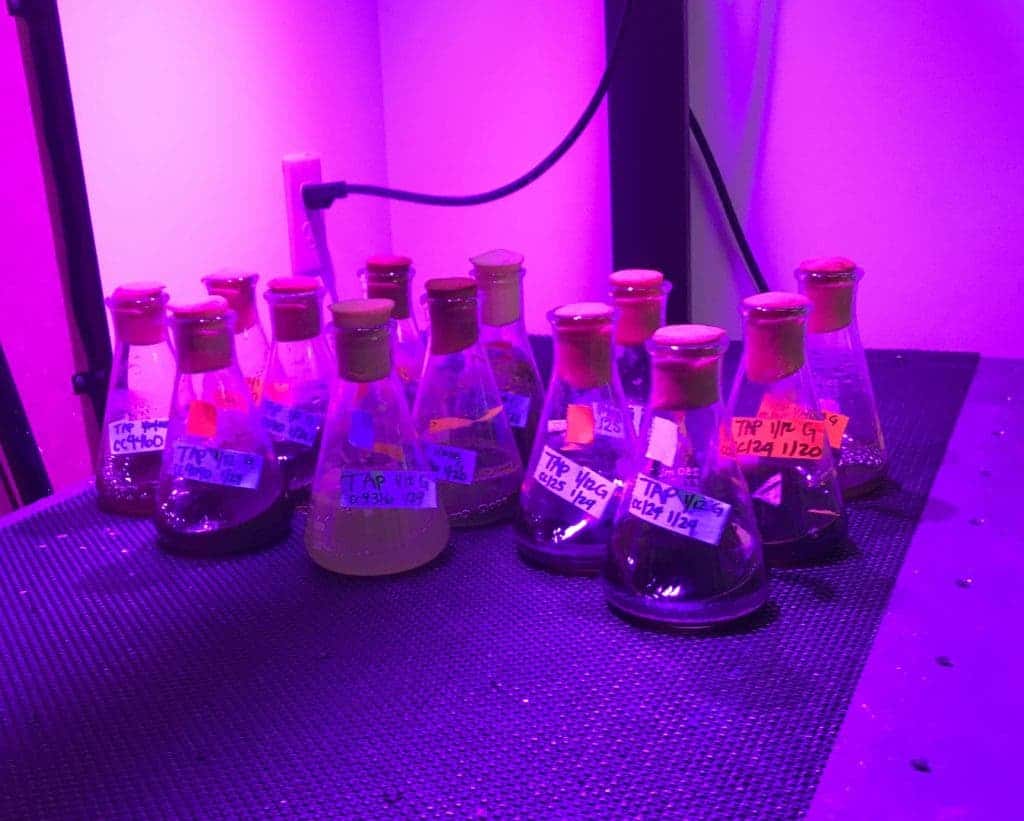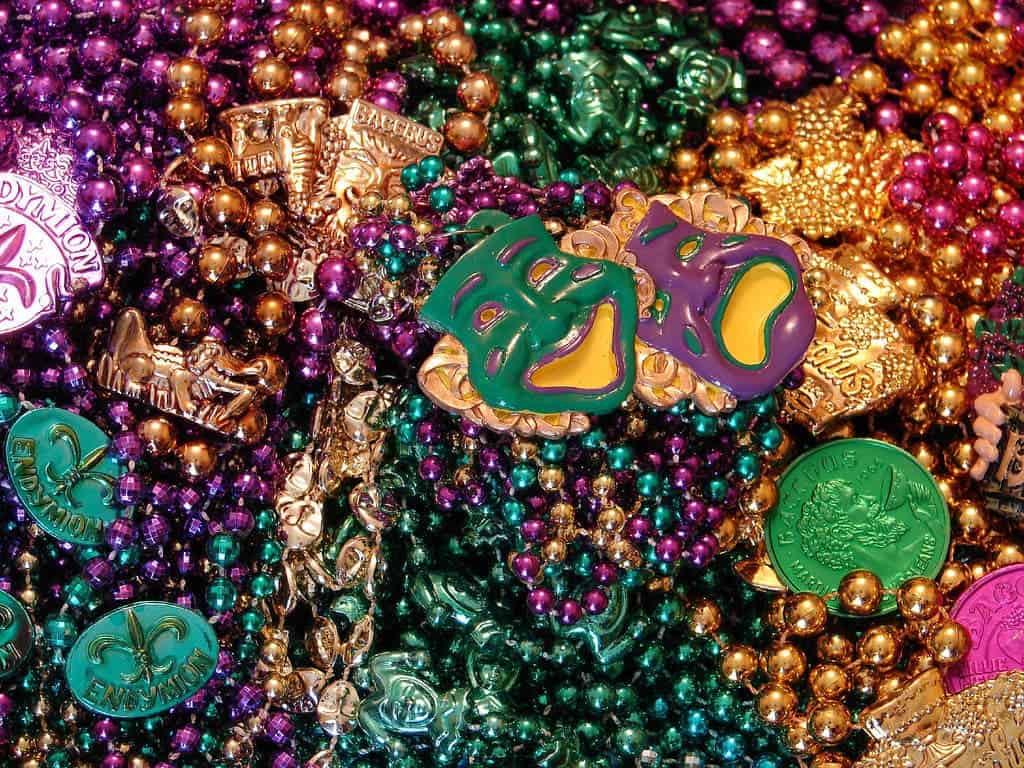Every year, tens of thousands of pounds of Mardi Gras beads enter the environment. As the celebrations and the Carnival start, the environment is the last thing on people’s minds.
People love throwing Mardi Gras beads, and people love catching them. In the minds of many, the Mardi Gras beads have become synonymous with the celebration, but the moment the beads touch the dirty ground, they become garbage — especially considering this year’s rain and mud.
The beads can cause significant environmental damage, and Louisiana State University (LSU) Biological Sciences Professor Naohiro Kato wondered if there was something he could do to reduce that damage.
“I believe we can change and do better. We have great resources to make our Mardi Gras celebrations more sustainable and to protect our environment and health,” said Kato.

LSU Biological Sciences Professor Naohiro Kato developed biodegradable Mardi Gras beads and doubloons, which are pictured here, from algae. Photo Credit: Alison Satake, LSU.
He was still wondering how to go about making the celebration more eco-friendly when one of his students accidentally gave him the idea. The student was supposed put some samples in the freezer, but as it so often happens, he forgot.
“My student was supposed to come into the lab three nights in a row to move our test tube samples of algae from the centrifuge to the freezer, but one night he forgot,” Kato said.
He then realized he could use the algae to produce beads. He started growing a significant quantity of these microscopic algae. To make things even better, Louisiana’s natural environment (warm climate and a lot of sunshine) make it ideal to grow algae. He successfully grew a species of microalgae that is strong and resilient and, most importantly, biodegradable.

Algae cultures grown in LSU biologist Naohiro Kato’s lab. Microscopic algae, or microalgae, can be used to make nutraceuticals and biodegradable Mardi Gras beads. Photo Credit: Alison Satake, LSU.
He requires about a gallon of microalgae culture to produce a bead necklace. In order to scale this, a pond about the size of a football field would be required. However, the good thing is that big ponds are plentiful in Louisiana — specifically, in the state’s rice, crawfish and aquaculture industries. But Kato has an even better idea.
He managed to make beads using runoff from the nutraceutical industry, which grows algae to produce vitamins and supplements. This could help offset the costs of production, which is currently three times larger than the cost of normal beads.
Kato has filed for a patent and started a spin-off company to push forth his idea. If it makes for a cleaner Mardi Gras, I’m all for it.










